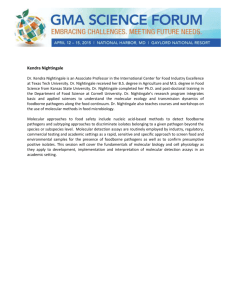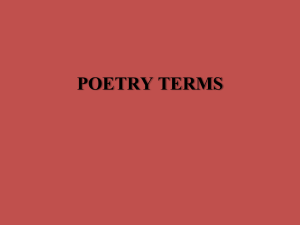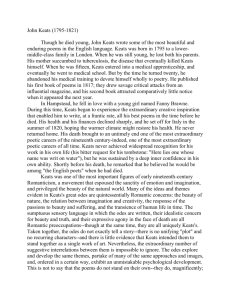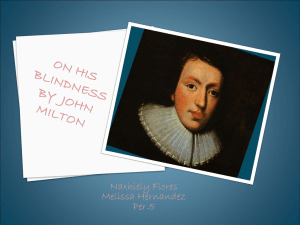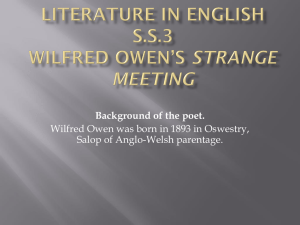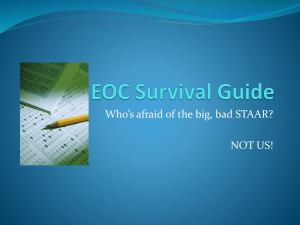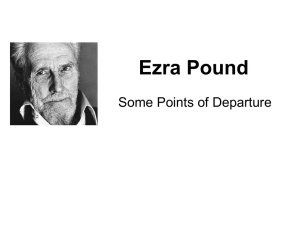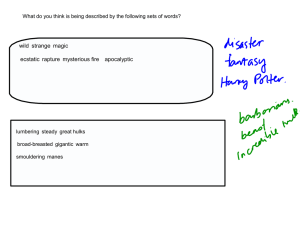Ode to a nightingale
advertisement
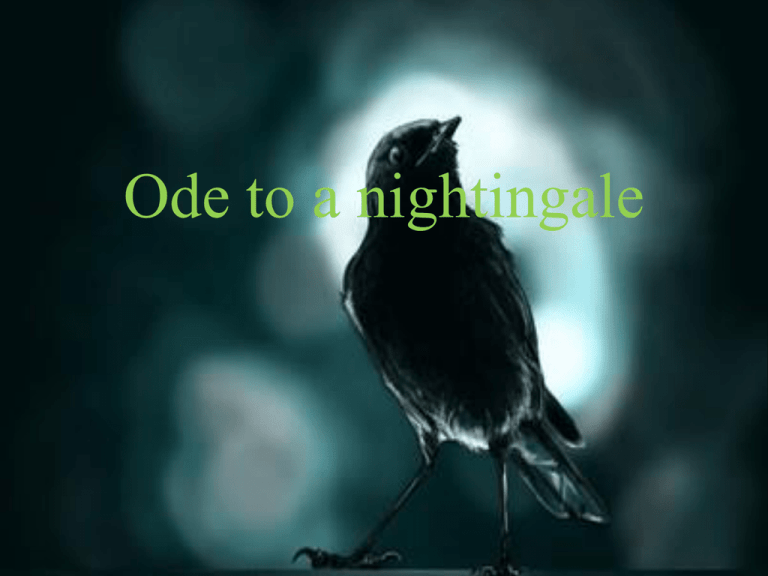
Ode to a nightingale A little background • • • • • • • Ode to a nightingale is written by John Keats it was written May 1819. It written either in a garden of the or, according to Keats' friend under a plum tree in the garden and a nightingale bird had built its nest near his home in the spring of 1819. The tone of the poem rejects the optimistic pursuit of pleasure found within Keats's earlier poems, and it explores the themes of nature, transience and mortality, the latter being particularly personal to Keats. The nightingale described in the poem experiences a type of death but it does not actually die. Instead, the bird is capable of living through its song, which is a fate that humans cannot expect. The poem ends with an acceptance that pleasure cannot last and that death is an unavoidable part of life. In the poem, he imagines the loss of the physical or the real world and sees himself dead—as a "sod“ (exact words) over which the nightingales The contrast between the immortal nightingale bird and mortal man, Sitting in his garden, his imagination. Becomes more present. The presence of weather is noticeable in the poem, as spring came early in 1819, which brought nightingales all over the heath or the land. Ode to a Nightingale use lots of figurative language and words that make you think. Theme and Tone • Ode to a nightingale has multiple tone and themes throughout the poem. • Some different theme are death, version of reality, happiness, mortality, and mortality. • The poem’s theme explores the themes of nature, transience and transitions and mortality, the latter being particularly personal to Keats. • describes a series of conflicts between reality and the Romantic ideal of uniting with nature • The nightingale is also the object of empathy and praise within the poem. • The nightingale's song within the poem is connected to the art of music. • One theme demonstrates his unhappiness with the real world and attempts to escape mentally into an ideal one. When his mental escape is disappointing, he returns to reality with a different understanding of life. Figurative Language and Poetic Devices • Our poet use different type of figurative language like alliteration, and metaphors and similes. • He uses this figurative language to better explain and stretch your imagination as he did himself. • Ex- simile –(Forlorn! The very word is like a bell) this means the word forlorn makes the author snap to reality as a bell wakes you in the morning. • Alliteration- (with beaded bubbles winking at the brim) What we think • In our poem we believe that the author has drinks and has a vivid imagination. • The speaker is speaking to the reader of the poem and the setting is both inside and outside the forest. • The author is basically in and out of the real world and the thought of death to the nightingale’s song. • The speaker or the author Is sort of obsessed or either emotionally attached to this nightingale bird. • Some ways he tells us this by saying “Darkling I listen; and, for many a time I have been half in love with easeful death,” and “Call’d him soft names in many a mused rhyme, to take into the air my quiet breath. Conclusion • Ode to a Nightingale is basically about feeling, emotion and reality. The pain and beauty of life using the nightingale, and the ideal of the real and pretend world, the joy and the melancholy are all experienced as life goes on and as humans the broad spectrum of highs, lows and everything in between as if he were mental or had an mental illness. Work sited The site we used to help us better annotate our poem is schmoop.com. All of our images were searched and found on Google images.
